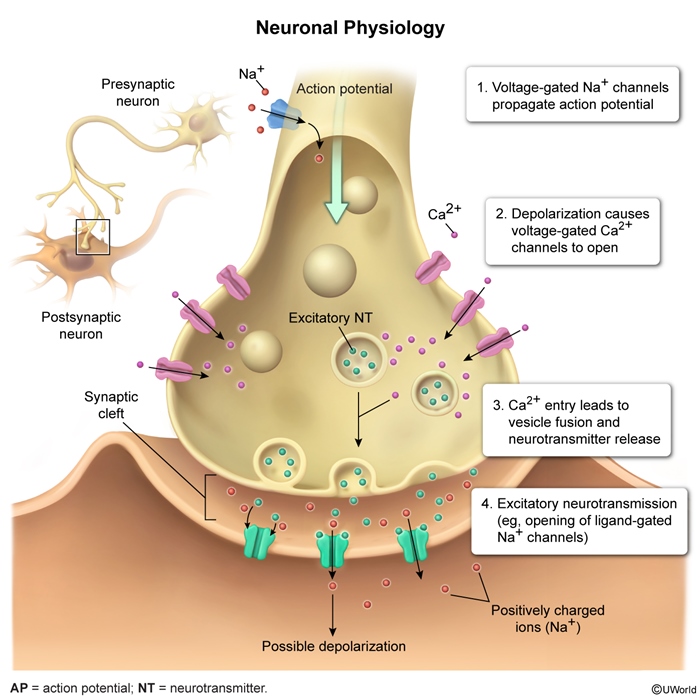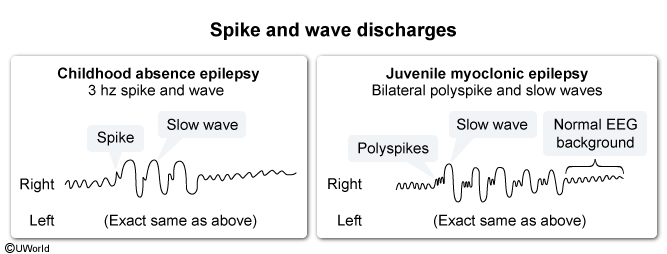Epilepsy/Seizures
Article Sections
- Introduction
- Pathophysiology
- Risk factors
- Clinical presentation
- Diagnostic evaluation of first-time seizure
- Diagnosis of epilepsy
- Differential diagnosis
- Management of status epilepticus
- Management of recurrence with antiseizure medications
- Pregnancy considerations
- Seizures refractory to ASM
- Complications related to seizures/epilepsy
- Discontinuation of AEDs
- Prognosis
- Summary
Introduction
Seizures occur due to excessive neuronal firing and can be focal (eg, from only a part of the brain) or generalized (eg, involving the whole brain). Epilepsy is characterized by recurrent, unprovoked seizures. Epilepsy can affect people of all ages, but it is most common in children and the elderly.
Pathophysiology
Seizures are initiated by a group of hyperexcitable neurons, which cause widespread depolarization and synchronized firing of other neurons in the cortex (Figure 1). This continuous excitatory neuronal communication is facilitated by the following:
- Dendrites receive inputs from other neurons that are summated at the axon hillock; if there are enough excitatory inputs to reach depolarization threshold, an action potential (AP) is generated.
- Voltage-gated sodium channels in the axon open to facilitate propagation of the AP.
Continue Learning with UWorld
Get the full Epilepsy/Seizures article plus rich visuals, real-world cases, and in-depth insights from medical experts, all available through the UWorld Medical Library.
Figures

Figure 1

Figure 2

Figure 3
Tables
Table 1
Table 2
Table 3